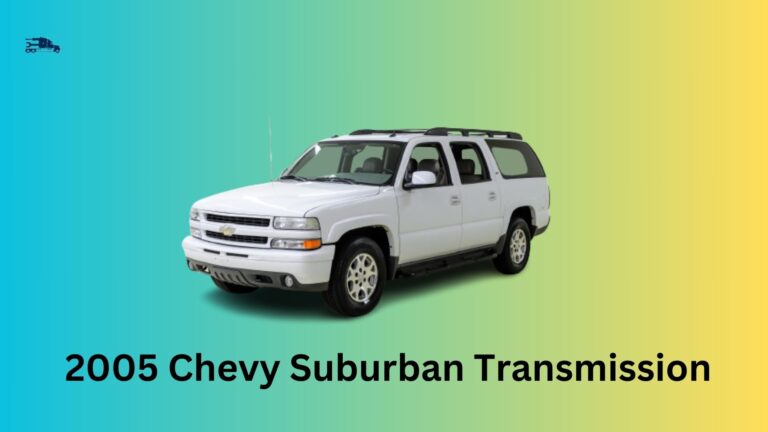Have you ever experienced the frustration of dealing with transmission problems in your 2006 Impala? It can be a real headache, I know firsthand. From strange noises to hesitation when shifting gears, these issues can put a damper on your driving experience. In this blog, I’ll be sharing my journey with 2006 Impala transmission problems, exploring the common issues faced by owners, and offering some potential solutions.
Table of Contents
Common Transmission Issues in the 2006 Impala
As an owner of a 2006 Impala, you may have experienced some transmission issues. It’s essential to be aware of these problems and their potential consequences to ensure the longevity and reliability of your vehicle.
1. Transmission Problems:
One of the most prevalent issues with the 2006 Impala transmission is a loss of power or slipping gears. This can be caused by various factors, such as worn-out clutch plates, low transmission fluid levels, or a faulty solenoid. If you notice your transmission hesitating, struggling to shift gears, or slipping out of gear, it’s crucial to address the issue promptly. Ignoring transmission problems can lead to severe damage, resulting in costly repairs or even complete transmission failure.
2. Engine Problems:
In some cases, transmission issues in the 2006 Impala can be related to underlying engine problems. For example, a malfunctioning engine sensor or a faulty throttle position sensor can cause erratic shifting or difficulty in engaging gears. If you experience unusual engine behavior, such as stalling, rough idling, or poor acceleration, it’s essential to have both the engine and transmission inspected to identify the root cause of the problem accurately.
3. Interior Accessories Problems:
Believe it or not, certain interior accessories can also contribute to transmission issues in the 2006 Impala. For instance, a faulty shift lever or a defective transmission control module can affect the overall performance of the transmission system. If you notice any abnormal behavior in your shift lever, such as difficulty shifting or the gear indicator not aligning correctly, it’s advisable to have these accessories inspected and repaired if needed.
4. AC / Heater Problems:
While it may seem unrelated, malfunctioning AC or heater components can indirectly impact the transmission system’s functionality in your 2006 Impala. A faulty AC compressor or a defective heater control valve can put an additional load on the engine, affecting its overall performance. This, in turn, can cause the transmission to work harder and potentially lead to transmission overheating or premature wear. Regular maintenance of your AC and heater components is crucial to prevent any adverse effects on your transmission.
5. Drivetrain Problems:
The drivetrain components, such as the driveshaft, axles, or differential, can also play a role in transmission issues in the 2006 Impala. Worn-out or damaged drivetrain components can cause vibrations, clunking noises, or even leaks, affecting the transmission’s smooth operation. Regular inspections and maintenance of the drivetrain system are essential to identify any potential issues and address them promptly.
6. Steering Problems:
One of the most frustrating issues I faced with my 2006 Impala was steering problems. There were times when my steering wheel felt stiff or unresponsive, making it difficult to maneuver smoothly. I noticed this problem occurring especially during low-speed turns or when parking. It’s important to get your steering system inspected by a professional mechanic to identify and address any potential issues promptly.
7. Body/Paint Problems:
Another common headache in the 2006 Impala is body and paint problems. Over time, I noticed that the paint on my Impala started to fade and peel, leaving unsightly patches on the exterior. Additionally, I experienced issues with rust formation, which can further deteriorate the bodywork. Regularly washing, waxing, and protecting your Impala’s paint can help prevent these problems, but if they persist, consult a reputable body shop for proper repairs.
8. Wheels/Hubs Problems:
When it came to wheels and hubs, I encountered a few challenges as well. I noticed a vibration in the steering wheel and a humming noise, especially at higher speeds. These symptoms often point to problems with wheel bearings or a potential issue with the suspension system. It’s crucial to have your wheels and hubs examined by a professional to ensure your safety on the road.
9. Cooling System Problems:
The 2006 Impala is also known to have cooling system problems. One major issue I faced was an overheating engine. This can occur due to a faulty radiator, thermostat, or water pump. Ignoring this problem can lead to major engine damage, so make sure to keep a close eye on your temperature gauge and promptly address any cooling system issues that arise.
10. Miscellaneous Problems:
There are a few miscellaneous problems that you might come across in your 2006 Impala. These can include electrical issues, such as malfunctioning power windows or faulty door locks. Additionally, transmission slipping, rough shifting, or even complete transmission failure can occur. If you experience any of these problems, it’s best to consult a trusted mechanic who specializes in transmission repairs to diagnose and resolve the issue.
11. Lights Problems:
One of the most frustrating issues I faced with my 2006 Impala was related to the lights. There were instances where the headlights would flicker or fail to turn on altogether. This can be a safety concern, especially during nighttime driving or in adverse weather conditions. Whether it’s a simple bulb replacement or a more complex wiring problem, it’s crucial to address this issue promptly to ensure a safe driving experience.
12. Windows/Windshield Problems:
Another common area of concern in the 2006 Impala is related to the windows and windshield. I’ve had instances where the power windows would malfunction, either getting stuck in a particular position or failing to respond to the switches. In some cases, the windshield wipers would stop working unexpectedly. These problems not only affect visibility but also compromise your overall driving comfort. Seeking professional assistance to diagnose and repair these issues is essential to maintain the functionality of your vehicle.
13. Electrical Problems:
The 2006 Impala is known for its electrical gremlins. From random electrical failures to malfunctioning dashboard instruments, electrical problems can be quite frustrating. I’ve experienced issues like sudden power loss, faulty sensors causing warning lights to illuminate, and even issues with the car’s central locking system. As these problems can be complex, it’s best to consult a qualified mechanic who specializes in electrical repairs for a thorough diagnosis and effective resolution.
14. Brakes Problems:
Let’s talk about brake problems. While the 2006 Impala is equipped with a reliable braking system, you may encounter issues such as squeaking or grinding noises, reduced braking performance, or even a soft brake pedal. Ignoring these signs can compromise your safety on the road. Regular maintenance, including brake pad replacements and fluid checks, can help prevent major brake issues and ensure optimal braking efficiency.
15. Exterior Accessories Problems:
When it comes to the exterior accessories of the 2006 Impala, there are a few issues that I’ve come across. One of the most common problems is with the power mirrors. They tend to malfunction, making it difficult to adjust the mirrors for optimal visibility. Additionally, some users have reported issues with the power windows, where they get stuck or fail to operate smoothly. While these problems may not directly affect the transmission, they can certainly be frustrating for any Impala owner.
16. Exhaust System Problems:
The exhaust system is another area where the 2006 Impala can encounter issues. One problem that I faced was a leaking exhaust manifold gasket. This led to a loud noise coming from the engine compartment and a decrease in fuel efficiency. It’s important to address such problems promptly, as they can affect the overall performance of the vehicle.
17. Seat Belts / Air Bags Problems:
The safety features of any car are of utmost importance, and the 2006 Impala is no exception. However, some users have reported problems with the seat belts and airbags in this model. In certain cases, the seat belts may fail to retract properly or become jammed, posing a serious risk in the event of an accident. Similarly, the airbags may not deploy when needed, compromising the overall safety of the driver and passengers.
18. Suspension Problems:
Having a smooth and comfortable ride is something we all look for in a car, but unfortunately, the 2006 Impala may encounter suspension issues. Many users have reported problems with the struts and shocks, leading to a bumpy and uncomfortable driving experience. These issues can also affect the vehicle’s handling and stability, making it essential to address them promptly.
19. Fuel System Problems:
The fuel system plays a crucial role in the performance of any car, and the 2006 Impala is no different. Some owners have reported issues with the fuel pump, which can result in poor fuel delivery, engine misfires, and even stalling. These problems can be frustrating and may require professional assistance to diagnose and fix.
Related Article:
2007 Nissan Frontier Transmission Problems
2016 Suburban Transmission Problems
Xtronic CVT Transmission Problems
2000 Ford Explorer Transmission Problems
2019 Chevy Colorado Transmission Problems
Solutions and Maintenance Tips
As a proud owner of a 2006 Impala, it’s important to know how to properly maintain your vehicle’s transmission to avoid unnecessary problems. Regular transmission fluid checks and changes are crucial to keep your Impala running smoothly and efficiently.
Regular Transmission Fluid Checks and Changes
One of the most vital aspects of maintaining a healthy transmission is checking and changing the transmission fluid regularly. Transmission fluid acts as a lubricant, ensuring that all the moving parts inside the transmission are properly protected and functioning optimally. Over time, this fluid can become dirty or contaminated, leading to various transmission problems. By regularly checking and changing the fluid, you can prevent potential issues from arising.
Importance of Maintaining Proper Fluid Levels and Quality
Maintaining proper fluid levels and quality is essential for the overall health of your transmission. Low fluid levels can cause overheating and premature wear and tear on the transmission components. On the other hand, using low-quality or incompatible fluids can lead to poor performance and potential damage to the transmission. It’s crucial to use the manufacturer-recommended fluid and ensure that the fluid levels are within the specified range.
Recommended Frequency for Fluid Checks and Changes
To ensure the longevity of your transmission, it’s recommended to check the fluid level at least once a month. This can be done by locating the transmission dipstick, usually found near the engine, and checking the liquid level according to the markings on the dipstick. Additionally, it’s advised to change the transmission fluid every 30,000 to 60,000 miles, depending on your driving habits and the severity of your transmission problems.
Transmission Flush and Filter Replacement
Performing a transmission flush and filter replacement is an essential maintenance task that can significantly improve the performance and lifespan of your transmission. A transmission flush involves removing all the old fluid from the transmission, cleaning the system, and refilling it with new fluid. This process helps to remove any contaminants or debris that may have built up over time, ensuring smoother operation. Additionally, replacing the transmission filter helps to prevent any particles from entering the transmission and causing potential damage.
Tips for Choosing a Reliable Professional for Repairs
Choosing a reliable professional for your transmission repairs is essential to ensure quality workmanship and avoid unnecessary expenses. Here are a few tips to help you find a trustworthy mechanic or transmission specialist:
- Ask for recommendations from friends, family, or fellow Impala owners who have had positive experiences with transmission repair professionals.
- Research online reviews and ratings to get an idea of the reputation and customer satisfaction of different repair shops or specialists.
- Look for certifications and accreditations, such as being an ASE-certified technician or membership in professional organizations.
- Request a detailed estimate and explanation of the repair process before committing to any repairs.
- Trust your instincts and choose someone who communicates effectively, answers your questions, and makes you feel confident in their abilities.
Preventive Measures for Transmission Issues
As an owner of a 2006 Impala, you may be concerned about potential transmission problems. While it’s true that this model year has had its fair share of transmission issues, there are preventive measures you can take to minimize the risk and promote a longer lifespan for your transmission.
Proper Driving Habits and Transmission Health
Your driving habits have a direct impact on the health of your transmission. By adopting some simple habits, you can significantly reduce the risk of transmission problems. Firstly, avoid aggressive driving, such as sudden acceleration or hard braking, as it puts unnecessary strain on the transmission. Smooth and gradual acceleration and deceleration are key to preserving the longevity of your transmission.
Additionally, avoid abrupt gear changes, especially when shifting from reverse to drive and vice versa. Allow the transmission to fully engage in each gear before accelerating. This will prevent unnecessary wear and tear on the transmission components.
Tips for Promoting a Longer Lifespan
Apart from adopting proper driving habits, there are other preventive measures you can take to promote a longer lifespan for your transmission. Adhering to a regular maintenance schedule is of utmost importance. Regular transmission fluid changes, filter replacements, and inspections can help identify any potential issues before they become major problems. Neglecting maintenance can lead to fluid contamination, inadequate lubrication, and ultimately, transmission failure.
When it comes to recommended services, be sure to consult your vehicle’s owner manual or seek guidance from a trusted mechanic. Some services may include inspecting and adjusting the bands, checking for leaks, and flushing the transmission fluid. By following the manufacturer’s recommendations, you can ensure your transmission is in optimal condition.
Avoiding Overloading and Towing Excessive Weight
Another factor that can contribute to transmission issues is overloading and excessive weight. Your 2006 Impala has specific towing capacity limitations, and it’s crucial to adhere to them. Exceeding the recommended weight can put excessive strain on the transmission, leading to overheating and premature wear.
Before towing, ensure that both the trailer and the items being towed fall within the weight limits specified in your vehicle’s manual. Additionally, consider using a transmission cooler if you frequently tow heavy loads. This will help maintain optimal operating temperatures and protect your transmission from unnecessary stress.
Conclusion
The 2006 Impala transmission problems have been a frustrating issue for many owners, including myself. The frequent issues with shifting, slipping, and even complete failure have caused significant inconvenience and financial burden. It’s disappointing that such a crucial component of the vehicle has proven to be unreliable. Moving forward, Chevrolet needs to address these transmission problems and provide lasting solutions for their customers.




